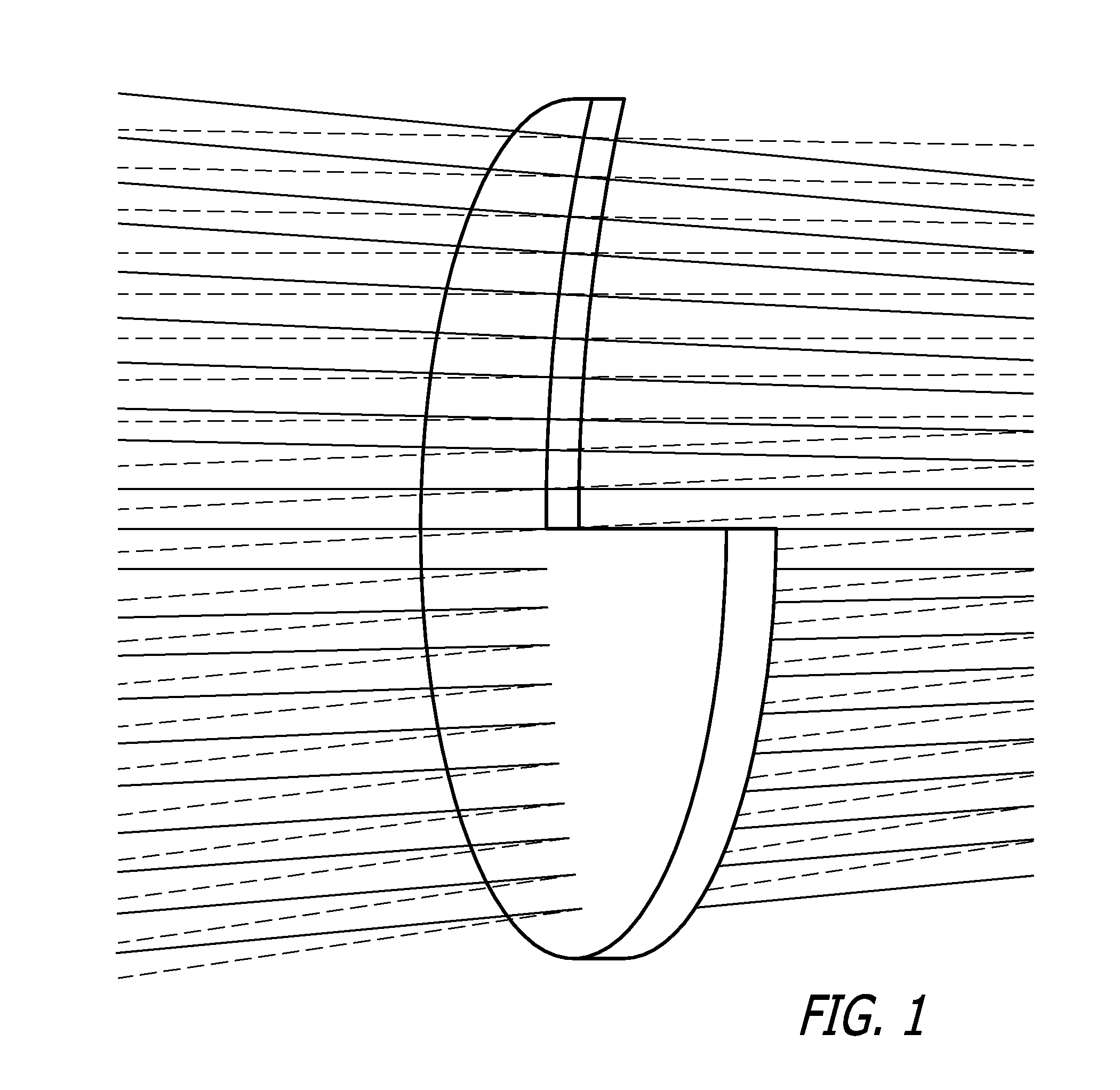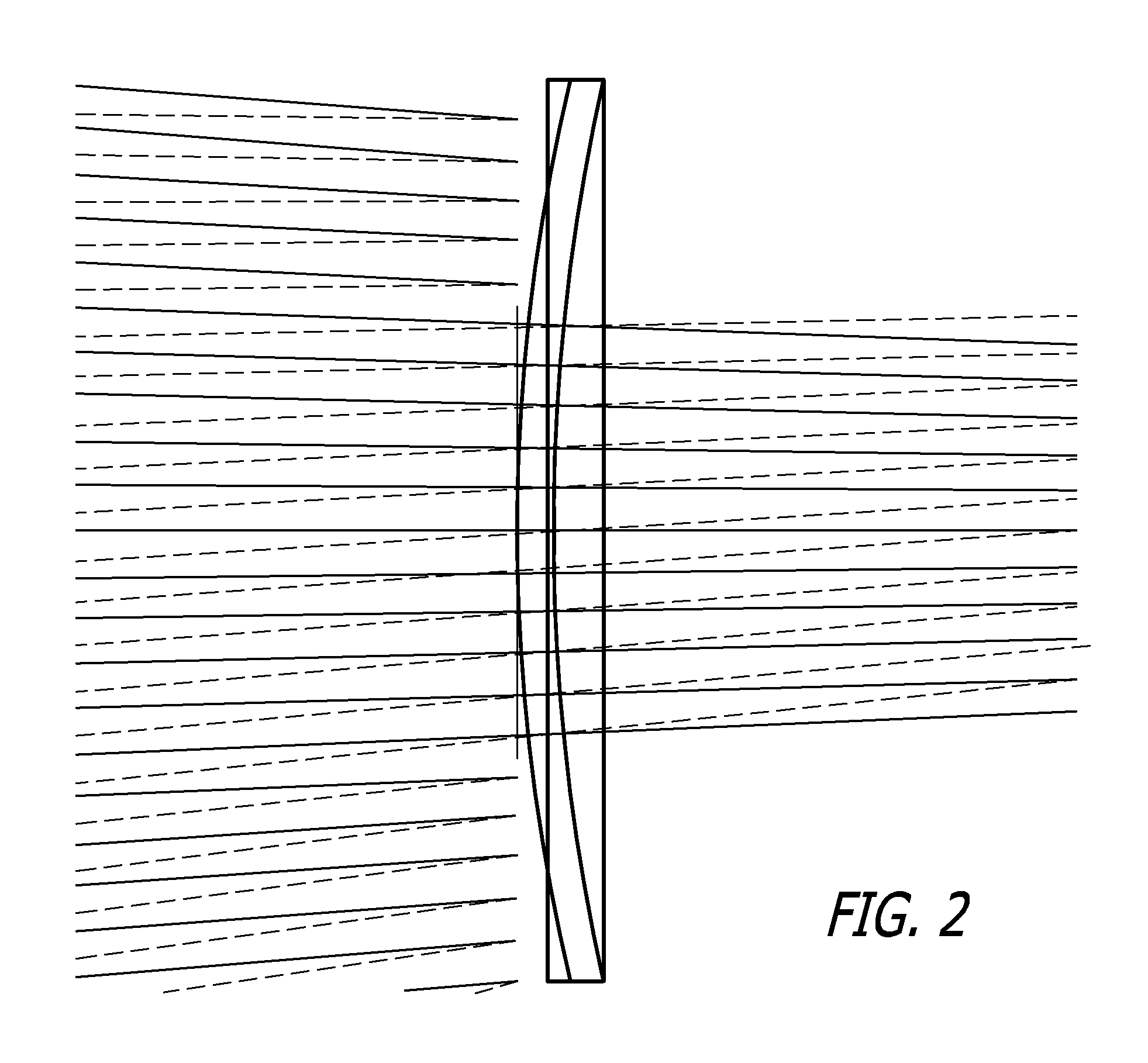Free-form progressive multifocal refractive lens for cataract and refractive surgery
a free-form, progressive technology, applied in the field of free-form progressive multifocal refractive lens for cataract and refractive surgery, can solve the problems of many doctors and patients having poor experience, unable to accommodate the crystalline lens in the human eye to allow focusing on objects, and have gone out of favor, so as to improve distance and near focus, improve the visual acuity of patients
- Summary
- Abstract
- Description
- Claims
- Application Information
AI Technical Summary
Benefits of technology
Problems solved by technology
Method used
Image
Examples
Embodiment Construction
[0050]The free form progressive multi-focal refractive lens in this invention is a type of intra-ocular lens that can be used in cataract and refractive surgery. Its unique features make it a good choice to provide both distance and near vision for two age groups. Cataract patients tend to be older (60+ year olds), while refractive surgery is more common in younger patients, in their 30s and 40s.
[0051]In one embodiment, the invention is a refractive-only lens, with a free form or progressive surface. This lens design is a more complex surface than the simple spherical or conic surfaces of prior art refractive type multifocal lenses, whose optical properties can be described by a single number such as radius of curvature only in the case of a spherical lens, or by two numbers, such as a radius and a conic constant for an aspheric lens surface.
[0052]In an embodiment of the present invention, the free form multifocal lens has a base conic surface, over which is laid s surface described...
PUM
 Login to View More
Login to View More Abstract
Description
Claims
Application Information
 Login to View More
Login to View More - R&D
- Intellectual Property
- Life Sciences
- Materials
- Tech Scout
- Unparalleled Data Quality
- Higher Quality Content
- 60% Fewer Hallucinations
Browse by: Latest US Patents, China's latest patents, Technical Efficacy Thesaurus, Application Domain, Technology Topic, Popular Technical Reports.
© 2025 PatSnap. All rights reserved.Legal|Privacy policy|Modern Slavery Act Transparency Statement|Sitemap|About US| Contact US: help@patsnap.com



